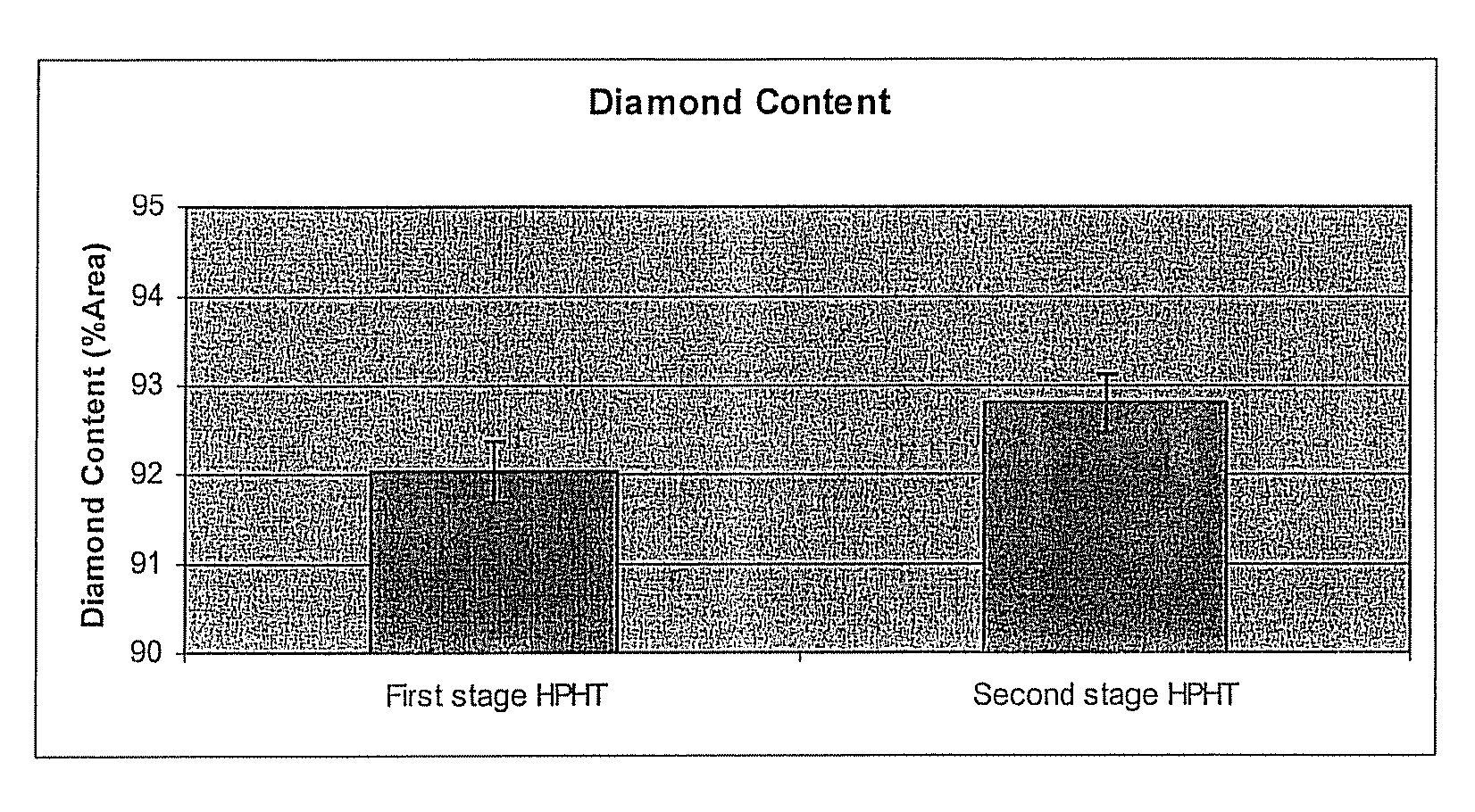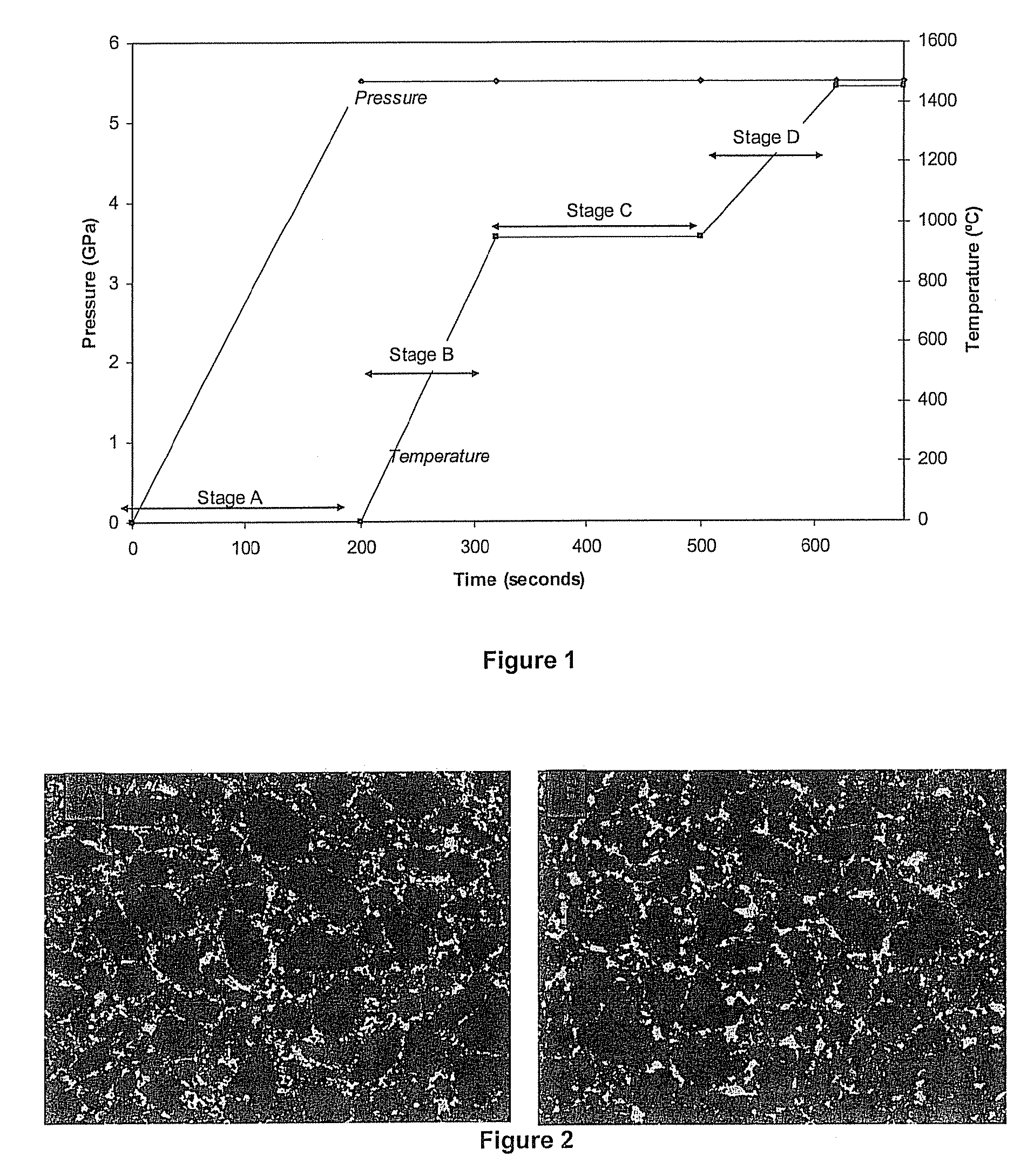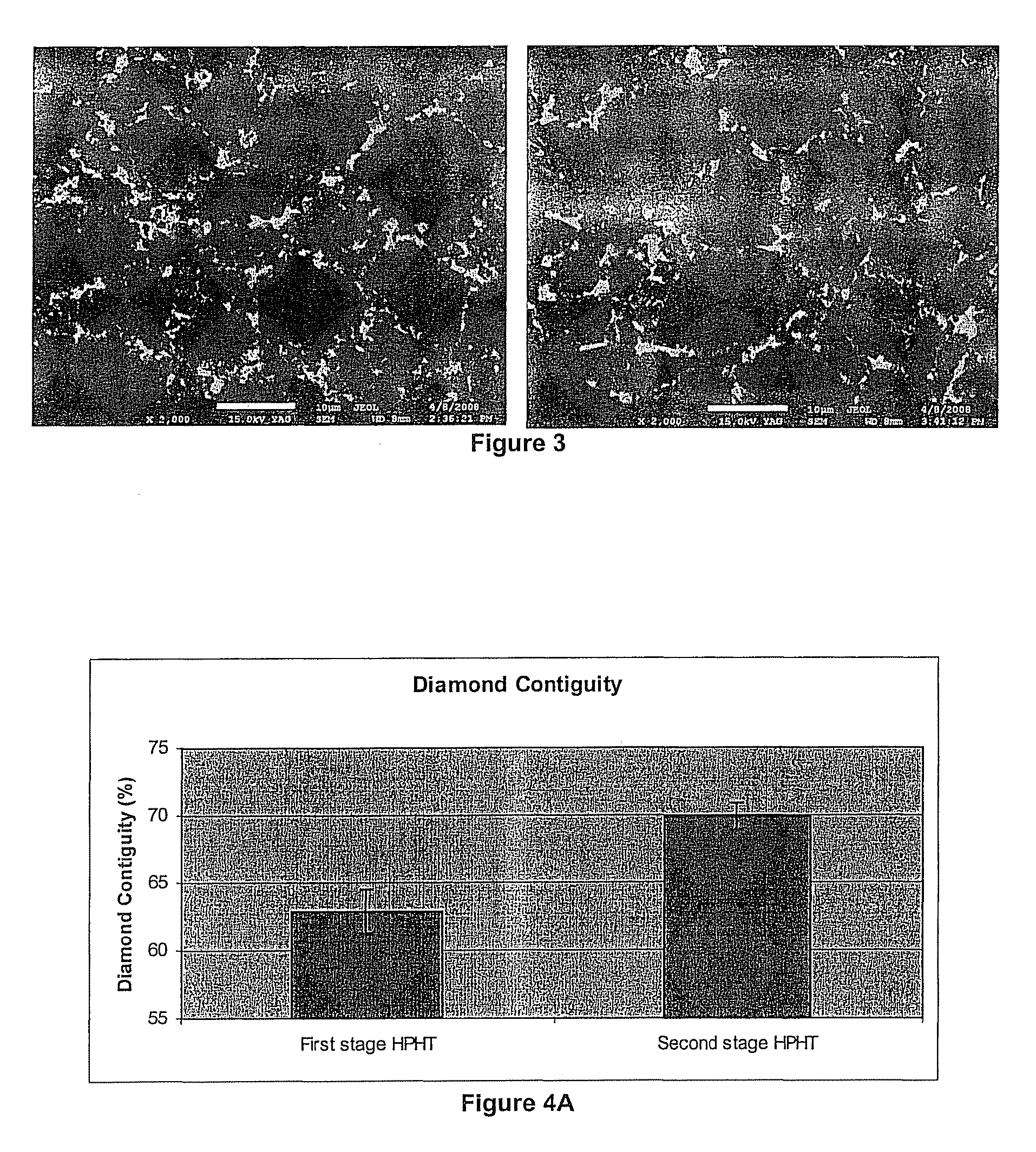Method for producing a PCD compact
a polycrystalline diamond and compact technology, applied in the field of polycrystalline diamond (pcd) materials, can solve the problems of reducing the strength of bonded diamond, limiting the potential industrial applications of this material and the potential fabrication routes that can be used, and reducing the performance of compact at high temperatures. achieve the effect of improving abrasion resistance, reducing the volume of open pores, and facilitating further densification of the pcd structur
- Summary
- Abstract
- Description
- Claims
- Application Information
AI Technical Summary
Benefits of technology
Problems solved by technology
Method used
Image
Examples
example
[0068]A sintered PCD table was first formed using a conventional HpHT cycle according to methods well known in the art. A multimodal diamond powder mixture backed with a cemented tungsten carbide substrate was assembled and treated in a vacuum furnace to remove any impurities. This green state product was then subjected to HpHT sintering conditions to produce a standard compact comprising a PCD table bonded to a cemented carbide substrate. A control sample of backed PCD generated using this method was set aside for comparative purposes. The microstructure of this comparative sample was investigated using SEM.
[0069]SEM analysis of the comparative formed PCD (FIGS. 2A and 3A) clearly shows the presence of diamond intergrowth within this PCD table. The dark regions in the micrograph represent the diamond phase, the grey regions represent the binder / catalyst cobalt and the lighter regions represent the tungsten carbide phases. The grey and lighter regions represent the second phase and ...
PUM
| Property | Measurement | Unit |
|---|---|---|
| pressure | aaaaa | aaaaa |
| pressure | aaaaa | aaaaa |
| temperatures | aaaaa | aaaaa |
Abstract
Description
Claims
Application Information
 Login to View More
Login to View More - R&D
- Intellectual Property
- Life Sciences
- Materials
- Tech Scout
- Unparalleled Data Quality
- Higher Quality Content
- 60% Fewer Hallucinations
Browse by: Latest US Patents, China's latest patents, Technical Efficacy Thesaurus, Application Domain, Technology Topic, Popular Technical Reports.
© 2025 PatSnap. All rights reserved.Legal|Privacy policy|Modern Slavery Act Transparency Statement|Sitemap|About US| Contact US: help@patsnap.com



